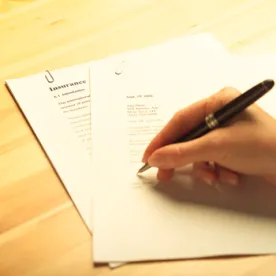Companies and institutions with long-tail claims – think asbestos, pollution, and sexual molestation – sometimes become involved in bet-the-company insurance coverage litigation. Faced with a barrage of tort lawsuits, the company turns to the liability insurers it has used for decades. If the insurers are successful in denying coverage, the company may face insolvency. Determining the presence and applicability of coverage requires establishing that the company purchased liability insurance in the 1960s, 1970s, and 1980s, and what the terms and exclusions of those policies were. In those coverage cases, the terms of paper documents that have been stuffed away in filing cabinets since Watergate and the Vietnam War, become the key pieces of evidence.
However, an influential committee of federal judges has initiated the process of removing the exception for ancient documents from the Federal Rules of Evidence. More specifically, the Judicial Conference Advisory Committee on Evidence Rules, a subcommittee of the Committee on Rules of Practice and Procedure (itself a subcommittee) of the Judicial Conference of the United States has proposed amendments to Federal Rule of Civil Procedure 803(16) and is accepting public comment and taking testimony regarding its deletion. This rather innocuous proposal may have major ramifications for insurance coverage lawyers.
Under the proposal from the Advisory Committee on Evidence Rules, Rule 803(16), the hearsay exception for “ancient documents,” would be deleted. Under current Rule 803(16), if a document is more than twenty (20) years old, and appears authentic, it is admissible for the truth of its contents. Although the rational for the ancient document exception is shaky – merely because something is old is no reason to believe it is more likely to be true – the inclusion of a hearsay exception for ancient documents is pragmatic. Often, it is simply implausible or functionally impossible to locate a witness who can testify with first-hand knowledge about a document that is decades old.
According to the Advisory Committee on Evidence Rules, the growing presence of electronically stored information, which will be easily retained in excess of 20 years, will lead to the abuse of Rule 803(16) to admit unreliable hearsay in the future.
Simply put, policyholders with long-tail claims, be they pollution, asbestos, or any other, often rely on ancient documents in proving those claims. Coverage disputes involving ancient insurance policies often rely on fractions of a complete insurance policy, and expert witnesses (known as “insurance archeologists”) are used to reconstruct material terms of policies from legally-sufficient secondary evidence. See, e.g., Dart Industries, Inc. v. Commercial Union Ins. Co., 28 Cal. 4th 1063 (2002).
The commercial reality is that insurance companies are not required by law, in most jurisdictions, to retain a copy of the policies of insurance which they issue. Instead, that burden rests on the policyholder. This is particularly true in the event that the policyholder becomes the plaintiff in a civil action, which carries the burden of proof. In those instances, the policyholder and the insurer may have to use accounting entries, check registers, stray portions of policy pages, the declarations page, or correspondence with insurance brokers in order to prove or disprove the existence of a policy and its material terms.
In current practice, witnesses with knowledge who can testify about these records are often unavailable because of lack of memory, the inability to locate a particular witness, or death. As a result, Rule 803(16) provides an exception to the hearsay rule to allow admissibility of these documents. If the proposed abrogation of Federal Rule 803(16) is approved (and eventually incorporated into the Federal Rules of Evidence), a party attempting to prove the contents of an insurance policy from the 1970s will be required to produce a witness or additional business records which confirm that the proffered policy is a business record which was made at or near the time indicated on the document in the regular course of that enterprise’s business. Rule 803(6).
Deletion of Rule 803(16) from the federal rules of evidence will also make the forum battle in coverage actions outcome dispositive in some cases. Cases litigated in state courts, where the ancient document rules will continue to apply, will be able to prove the existence of certain policies or specific terms. Filing the same case in federal court federal court would be a non-starter and perhaps sanctionable under Rule 11 if the plaintiff knew the case would rely on ancient insurance policy documents for which the attorney knew no sponsoring witness or associated business records were available to support.
Because long-latency claims continue to haunt companies, insurers, and the court system, there is still a role for the ancient documents exception in the Rules of Evidence. Although the period for public written comment has closed, public testimony will be taken. You can find the dates and details of public hearings here. In addition to a number of lawyers, seven sitting United States Senators have written to oppose the abrogation of the ancient documents exception.




 />i
/>i

